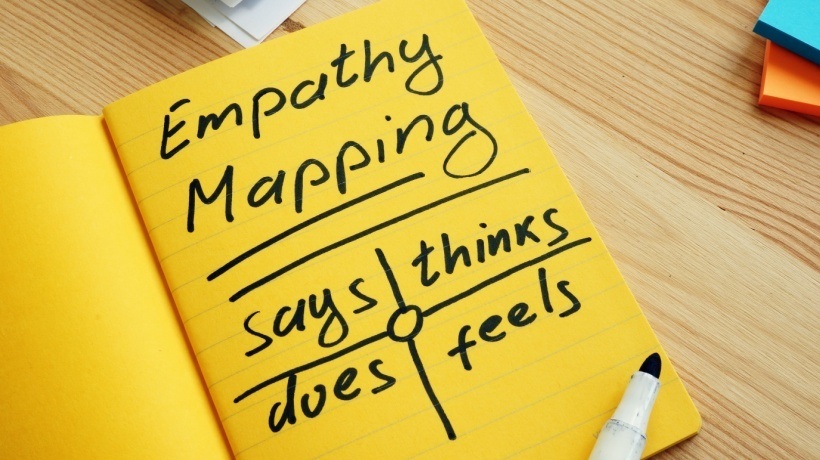Practice Empathy At Work And Create Safe Spaces
Empathy is one of the most valuable skills a person can possess. And yes, it is indeed a skill. Encouraging the practice of empathy at work can have immense benefits for your organization as a whole, as it can establish positive interpersonal connections and enhance workflow processes and overall performance. So, let's go through the basics, how to show empathy, and how to accept it in a work setting.
Main Pillars And Benefits Of Empathic Behavior At Work
Generally, empathic behavior centers around two pillars: exceptional listening skills and the ability to perceive and relate to another person's situation or thought process. When it comes to professional environments, employees and leaders alike should practice putting themselves in one another's shoes to better understand different perspectives and experiences. Empathy cultivates a shared sense of connection among colleagues and, in turn, builds a stronger team dynamic. In addition, empathy encourages healthier leadership styles. Ultimately, being a good leader requires empathetic thinking, and being able to connect with your people improves engagement and workplace performance.
How To Show Empathy At Work
1. Respect Boundaries
Applying empathy to your professional interactions without crossing other people's boundaries can be challenging. Even with the best intentions in mind, being unaware of your coworkers' boundaries might make them feel uncomfortable or cause unnecessary stress. Thus, you should make it a common practice to gauge their boundaries before trying to establish a connection. Another essential is fostering a safe environment that encourages healthy dialogue. That way, your employees will find it easier to speak up when their boundaries are overstepped. Boundary setting is also a form of self-preservation and self-care; employees that care for their emotional well-being will avoid job burnout and achieve better results.
2. Detect Burnout
Burnout can cause strain in employees' lives inside and outside of the office. Leaders should be equipped to detect burnout among their workforce and have a strategy to broach issues early on. Reducing workload, encouraging time off, and reviewing their break policy are all empathic actions a leader can take to reduce burnout among their team. In addition, empathy itself can bring on burnout—empaths are highly intuitive, emotionally sensitive people, meaning that they might feel others' emotions as deeply as their own. Emotional burnout is just as critical as physical burnout.
3. Personalize Work Plans
A high-performing team consists of people that focus on their strong areas and work together to complement one another. If you want your company to achieve its targets, you need to invest in your people on an individual level. Every member of your team has a different work ethic and needs different incentives. Discover your team's preferences and try to personalize their work plans as much as possible. Taking your employees' needs into account allows them to focus on their strengths, which boosts self-confidence and productivity. However, practicing empathy also gives you the opportunity to highlight their personal areas for improvement tactfully and respectfully.
4. Acknowledge And Listen
Active listening is the cornerstone of empathic behavior. Teach your workforce to be proactive listeners by cultivating a company culture focused on open dialogue that can smooth out tensions before they arise and establish positive connections among team members. Acknowledging and listening to your coworkers' experiences can also help alleviate some of their stress and reduce the likelihood of mental burnout, given that every member of the team knows they have a support system in place.
5. Check In Regularly
One-on-one check-ins between employees and upper management can shed light on any troubling experiences your team members may have had, which gives you a chance to address them before things escalate. This approach fosters a well-balanced work environment where conflict is addressed immediately and proactively, with empathy at center stage. You can also create peer groups where employees are able to share experiences and concerns in a more comfortable and collaborative setting.
How To Accept Empathy
1. Set And Protect Your Boundaries
As mentioned above, setting healthy boundaries is of paramount importance to ensure everyone's well-being. They are a wellness map that helps others navigate the sometimes choppy waters of social interaction. As such, setting and protecting your own boundaries is just as important. In professional environments, acknowledging when your limits have been crossed can be challenging, especially if you're concerned it might lead to conflict. However, not creating healthy boundaries can take its toll on workplace performance and productivity.
2. Allow Others To Help
If you feel like there's too much on your plate and the quality of your work is being compromised, it's healthy to ask for someone else to bear some of the burden. We aren't machines and can't constantly operate at 100% efficiency. Asking for and receiving outside help means accepting someone else's empathy, which also helps to build healthy bonds among coworkers. Lastly, companies should strive for a culture of mutual respect and support so that everyone knows they can express their emotions without the fear of being judged.
Conclusion
Empathy is a teachable skill that every organization should cultivate, both in their culture and in their day-to-day processes. Empathic behavior in professional settings cultivates safe spaces for open communication to thrive and allows for healthier leadership habits. To ensure the well-being of your company and your people, make sure to encourage and model empathy as a daily practice.
What do modern employees really want, and how can leaders help to build a solid culture that meets their needs and expectations? Download The Future Of Work Report 2022: Culture Trends And What Employees to learn how to develop a great workplace that attracts and retains top talent.









